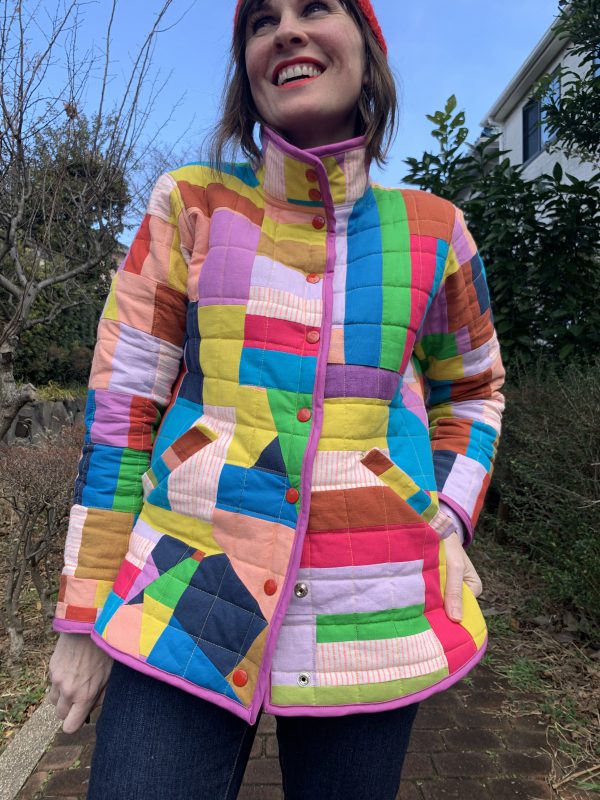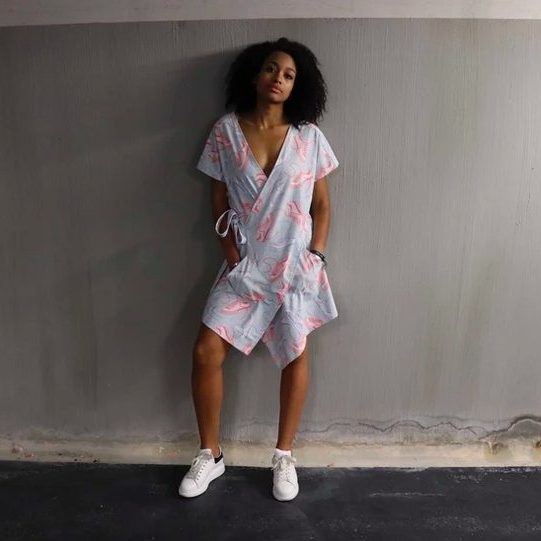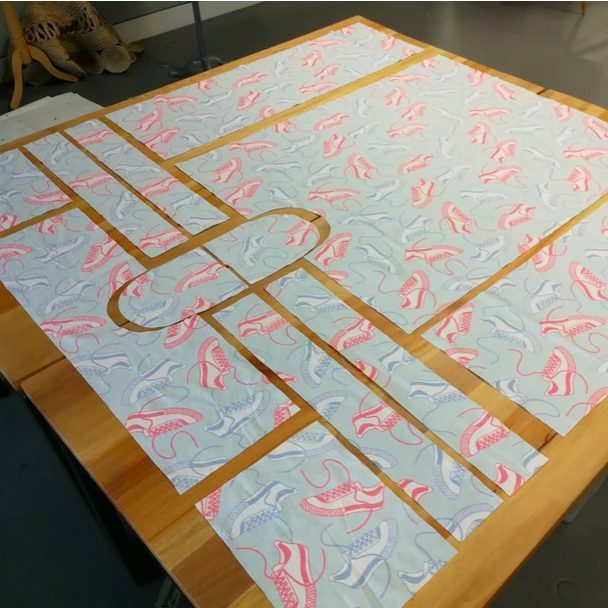7 Tips for Sustainable Sewing
Have you ever found yourself thinking about how to make your sewing journey more eco-friendly but cannot grasp a point to start with? There are a lot of ways you can become more sustainable in your maker practices, and we’ve listed a few below to help you get started! If you have any ideas to add, don’t hesitate to leave a comment.
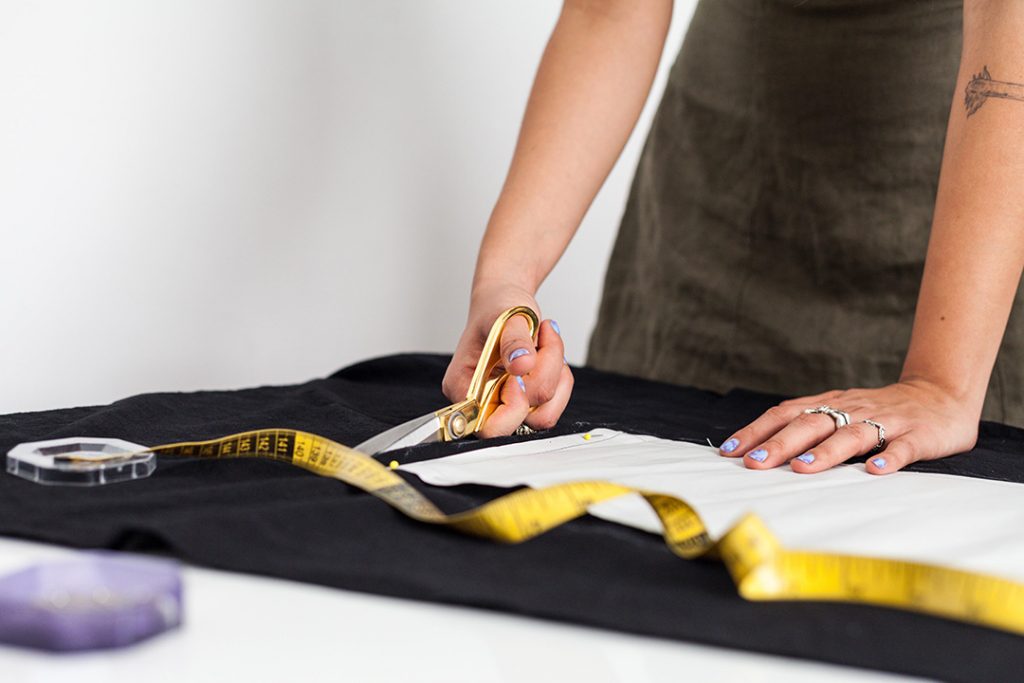
1. Sell those fabrics you don’t use
“One man’s trash is another one’s treasure”, someone said back in the day and it couldn’t be truer than that. If you feel overwhelmed by all the fabric you have in your stash, why not try to sell some of it? I know I have a few treasures in my stash that I bought years ago, but I realized I’ll probably never sew them up since my style has changed quite a bit over the years. The idea of getting at least part of the investment back helps to get rid of those more expensive fabrics I’m holding on to.
You can host an event online or in-person, which gives you a specific time frame. After the event you can donate the fabrics you didn’t sell. Another option is to open an Etsy shop to sell your fabrics, which will be more spread out over time but you’re more likely to sell a greater quantity of fabrics if you are patient.
Facebook has local area groups where you can post your fabrics or even the marketplace, where you can sell your fabrics locally. On Instagram you have different possibilities: one thing that’s quite useful if you have a bit of fabric to sell is to open another profile similar to yours, with the “destash” hashtag added in the main name or hashtags. This article tells you exactly how to set up your destash event.
2. Sew using the scraps from you old projects
There are so many things you can do with your scraps! There’s so many small projects to make, like this fabric bookmark, this fabric unsponge, potholders, baby bibs. Just google “scrap sewing project” and you’ll find something that makes sense for you.
The downside with small projects is that you might produce scraps at a higher rate than you can sew them up. A great way to use a lot at once is to sew them all together and create a new fabric. Take a look at this super cool jacket that Katie Kortman sewed with fabric made from scraps. The Opal cardigan View C is a coatigan that can be used for this purpose. You can make it long like the pattern or shorten it.
And if you don’t feel like doing anything with your scraps, sew yourself a pouf, fill it with your scraps and solve your scrap problem all at once!
3. Try Zero Waste patterns
If you don’t want to create fabric scraps to start with, and you get a kick out of pattern tetris, try out zero-waste patterns. These garments are designed to use a whole piece of fabric without any leftovers. The designs are really creative and interesting, and there are so many designs now that you can create a complete wardrobe including accessories all with zero-waste patterns. Below you can see the neat puzzle that makes up the wrap dress by Milan AV-JC.
4. Shop for second hand fabrics
The most sustainable fabric is the fabric that you already own, but second to that is a fabric previously owned by someone else. The thrill of thrifting fabric is that you never know what you’ll find, and if you’re lucky you can find some vintage or good quality fabrics for a steal. Thrift stores often have a fabric section, but don’t forget to check out the bedsheet and curtain section too. Always unfold the whole fabric to check for stains or flaws.
Other second hand clothing can also serve as a starting point. Turn a dress into a top or a skirt, a coat into a bag, or create children’s clothes from adult clothes. Don’t buy plus size clothing if you’re not plus size though, as that can be hard to find at a good price, and it should be purchased by people who will wear it. Read this post if you want to know more.
5. Buy sustainably produced fabrics
If you are looking for something very specific for your next garment, you can also buy a sustainably produced fabric. A fabric can be sustainable in two ways: the fiber content or the origin. If a fabric is sustainably produced, that means the fibres used are of a sustainable type (such as hemp, which used a lot less water than cotton), or it’s organically grown (without the use of synthetic fertilizer and pesticides). Viscose and rayon have a procduction process that is very polluting, but there is a sustainable alternative called Ecovero Viscose.
Another type is deadstock, fabric that comes from designers that don’t use them anymore for their collections, or a roll unsold by a fabric mill. These are technically also second hand fabrics, with the difference that they are in a good-as-new condition, and can be a great opportunity to purchase luxury fabrics for a lower price. One of our favorite shops is Offset Warehouse. I bought my wedding dress fabric here, a sustainably produced raw silk that harvests the silk without killing the silkworms, called peace silk. Amazing!
6. Plan your projects

Plan your sewing projects so you know what fabric you’ll need. A good rule to buy by is to never buy a fabric without a specific project in mind. You’ll probably have an idea of how many projects you actually have time for, so try not to buy more fabric than you can use. A capsule wardrobe also helps with this, as it ensures that your pieces will go together. If you sign up for our newsletter, you’ll get our free Sewing Project Planner!
7. Care and mending

If you can make your garments last longer, you won’t have to make new ones as often. I know, you don’t want to o stop making clothes, but I bet you’ll have more projects than you can sew anyway, right? Taking care of your garments means knowing how to wash, dry and store them the right way. Give them extra love when they get damaged, and repair them with visible or invisible mending techniques. This often gives them even more personality and it shows that they are well-loved. This article gives you no less than 15 ways to mend tears in fabric, visible and invisible.
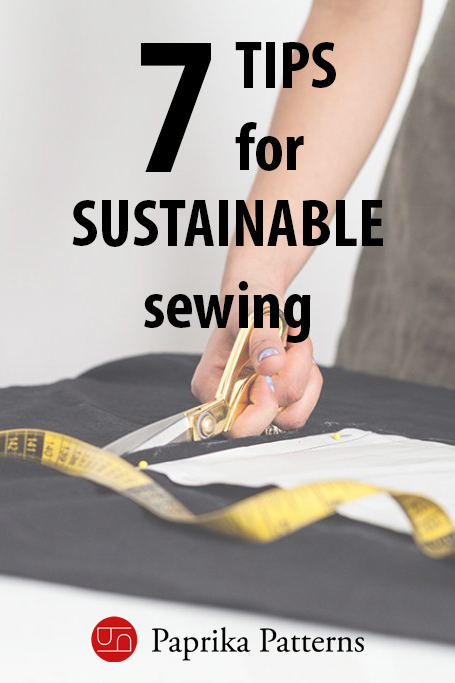
Even incorporating a few of these sustainable sewing practices will make a difference, not just in the world but in your attitude and the way your sewing practice relates to the world. Do you know any other good practice to help other fellow sewists? Share them if you feel like doing so in the comment section below.


